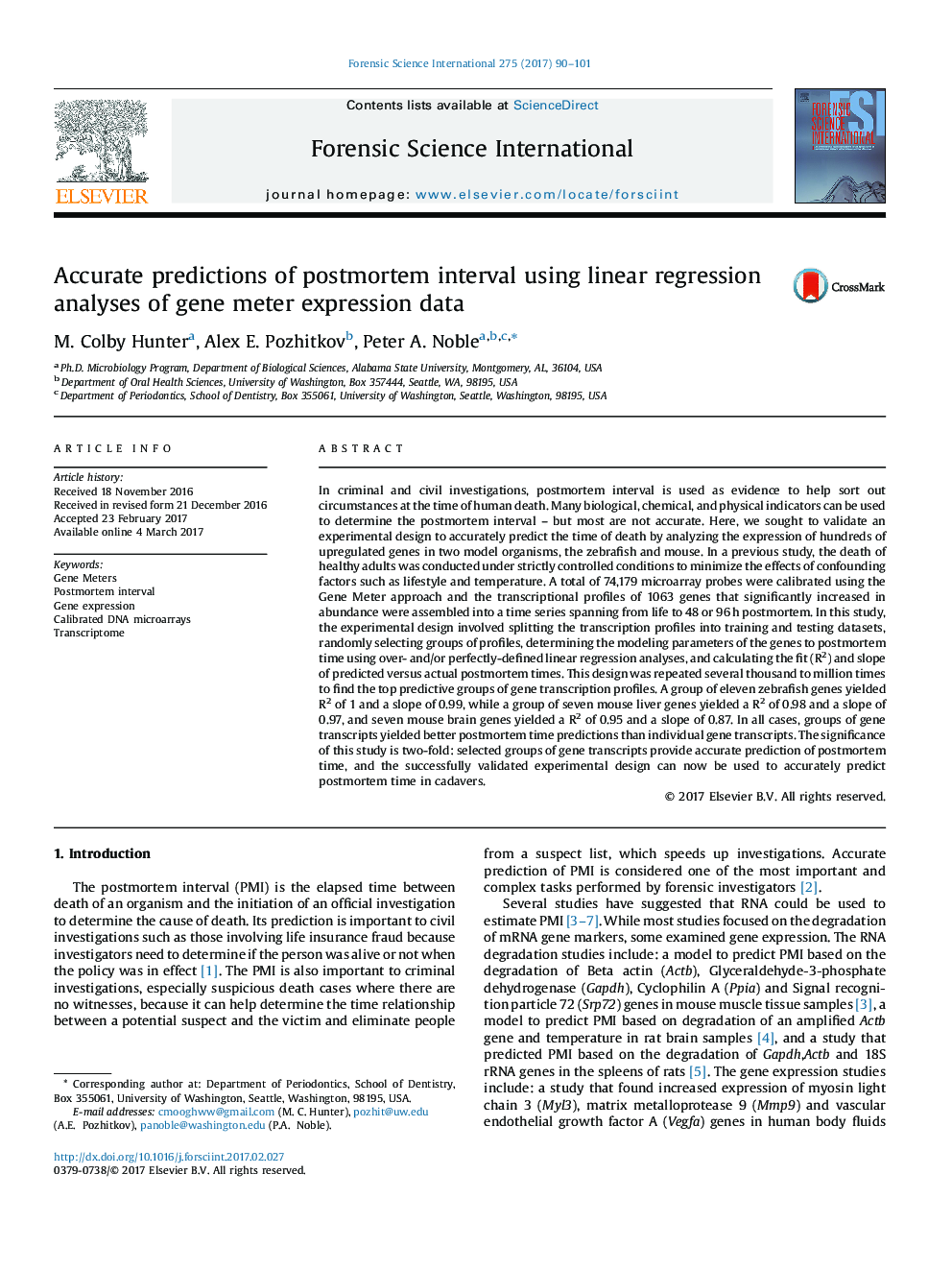| کد مقاله | کد نشریه | سال انتشار | مقاله انگلیسی | نسخه تمام متن |
|---|---|---|---|---|
| 6462336 | 1421975 | 2017 | 12 صفحه PDF | دانلود رایگان |
• An experimental design was proposed to predict the time of death of the zebrafish and mouse.
• We optimized modeling parameters of transcript abundances using perfectly- defined linear regressions.
• An iterative program selected groups of gene transcripts that accurately predicted postmortem time.
• The validated experimental design can now be adapted to predict postmortem time in cadavers.
In criminal and civil investigations, postmortem interval is used as evidence to help sort out circumstances at the time of human death. Many biological, chemical, and physical indicators can be used to determine the postmortem interval – but most are not accurate. Here, we sought to validate an experimental design to accurately predict the time of death by analyzing the expression of hundreds of upregulated genes in two model organisms, the zebrafish and mouse. In a previous study, the death of healthy adults was conducted under strictly controlled conditions to minimize the effects of confounding factors such as lifestyle and temperature. A total of 74,179 microarray probes were calibrated using the Gene Meter approach and the transcriptional profiles of 1063 genes that significantly increased in abundance were assembled into a time series spanning from life to 48 or 96 h postmortem. In this study, the experimental design involved splitting the transcription profiles into training and testing datasets, randomly selecting groups of profiles, determining the modeling parameters of the genes to postmortem time using over- and/or perfectly-defined linear regression analyses, and calculating the fit (R2) and slope of predicted versus actual postmortem times. This design was repeated several thousand to million times to find the top predictive groups of gene transcription profiles. A group of eleven zebrafish genes yielded R2 of 1 and a slope of 0.99, while a group of seven mouse liver genes yielded a R2 of 0.98 and a slope of 0.97, and seven mouse brain genes yielded a R2 of 0.95 and a slope of 0.87. In all cases, groups of gene transcripts yielded better postmortem time predictions than individual gene transcripts. The significance of this study is two-fold: selected groups of gene transcripts provide accurate prediction of postmortem time, and the successfully validated experimental design can now be used to accurately predict postmortem time in cadavers.
Journal: Forensic Science International - Volume 275, June 2017, Pages 90–101
